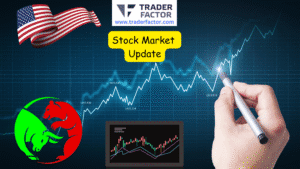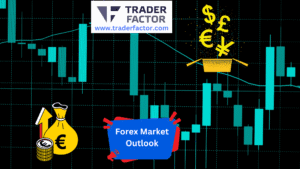Financial markets are bracing for a pivotal week as the Federal Open Market Committee (FOMC) prepares to release its highly anticipated statement. With inflation persisting above the Federal Reserve’s 2% target at 2.7%, investors are closely monitoring every signal from policymakers. The FOMC meeting today represents a crucial moment for monetary policy direction, while Chair Jerome Powell’s upcoming Jackson Hole speech adds another layer of significance. Traders are particularly focused on potential rate adjustments, economic outlook revisions, and forward guidance that could reshape investment strategies across all asset classes.
Table of Contents
ToggleCurrent Market Positioning Before FOMC News
Stock Market Performance Analysis
Major U.S. equity indices are trading near record levels ahead of the FOMC announcement. The S&P 500 has maintained its upward trajectory despite recent volatility, while the Nasdaq continues to benefit from technology sector strength. However, market breadth shows signs of narrowing, with fewer stocks participating in the rally. This concentration suggests investors are becoming more selective as they await clarity from Federal Reserve officials.
The Dow Jones Industrial Average has shown resilience, supported by defensive sectors that typically perform well during periods of monetary uncertainty. Banking stocks have been particularly sensitive to interest rate expectations, with many financial institutions positioning themselves for potential policy shifts. Energy and healthcare sectors have provided stability, while growth stocks remain vulnerable to any hawkish surprises from the FOMC meeting today live coverage.
Bond Market Signals and Yield Dynamics
Treasury yields have been fluctuating as investors attempt to price in various FOMC scenarios. The 10-year Treasury yield remains a critical barometer for long-term economic expectations and Federal Reserve policy effectiveness. Recent yield curve movements suggest market participants are divided on the Fed’s next steps, creating opportunities for tactical fixed-income positioning.
Corporate bond spreads have tightened in recent weeks, indicating improved risk appetite among institutional investors. However, this optimism could quickly reverse if FOMC members signal more aggressive monetary tightening than currently anticipated. Credit markets are particularly sensitive to any changes in the Fed’s quantitative tightening program, which continues to reduce liquidity from the financial system.
Federal Reserve Policy Framework and Decision Process
Understanding FOMC Members’ Perspectives
The Federal Open Market Committee consists of twelve voting members who bring diverse economic perspectives to monetary policy decisions. Regional Federal Reserve bank presidents contribute local economic insights, while Board of Governors members focus on national economic trends. This diversity of viewpoints often leads to robust policy debates that shape the final FOMC announcement.
Recent speeches from various FOMC members have revealed differing views on inflation persistence and labor market strength. Some officials emphasize the need for continued restrictive policy, while others point to emerging signs of economic cooling. These philosophical differences will likely influence today’s statement and provide clues about future policy direction.
The Decision-Making Timeline and Process
FOMC meeting minutes from previous sessions reveal a systematic approach to policy formulation. Committee members review extensive economic data, staff projections, and market conditions before reaching consensus. The process involves multiple rounds of discussion, with particular attention paid to inflation trends, employment data, and financial stability considerations.
The timing of policy announcements follows a structured schedule, with the FOMC meeting countdown building anticipation among market participants. Today’s statement release, followed by potential media availability, will provide immediate market reaction opportunities. The Federal Reserve’s communication strategy has evolved to provide greater transparency while maintaining policy flexibility.
Economic Data Driving FOMC Considerations
Inflation Trends and Price Pressures
Current inflation readings continue to exceed the Federal Reserve’s 2% target, creating a challenging environment for policymakers. Core personal consumption expenditures, the Fed’s preferred inflation measure, has shown stubborn persistence despite previous monetary tightening efforts. Supply chain disruptions, labor market tightness, and geopolitical tensions have all contributed to sustained price pressures.
The composition of inflation has shifted over time, with services inflation becoming more prominent as goods price increases have moderated. This transition reflects the complex nature of current economic conditions and the difficulty in achieving the Fed’s dual mandate of price stability and full employment. FOMC members must balance these competing pressures when formulating policy responses.
Labor Market Dynamics and Employment Trends
Recent employment data presents a mixed picture of labor market conditions. While unemployment remains near historically low levels, job growth has shown signs of moderation. The quits rate and job openings have declined from pandemic-era peaks, suggesting some cooling in labor demand. However, wage growth continues to outpace historical averages, contributing to persistent inflation pressures.
Labor force participation rates have gradually improved but remain below pre-pandemic levels in certain demographics. This structural shift complicates traditional employment analysis and may influence FOMC members’ assessment of labor market health. The relationship between employment conditions and inflation expectations remains a key focus for Federal Reserve policymakers.
Market Reactions and Trading Strategies
Equity Market Positioning Ahead of Announcement
Professional investors have adopted cautious positioning ahead of the FOMC press conference. Many portfolio managers have reduced leverage and increased cash allocations to maintain flexibility for post-announcement repositioning. Options markets show elevated implied volatility, reflecting uncertainty about potential market moves following the Federal Reserve’s communication.
Sector rotation strategies have become increasingly popular as investors attempt to position for various policy outcomes. Defensive sectors like utilities and consumer staples have attracted renewed interest, while cyclical stocks face pressure from potential economic slowdown concerns. Technology stocks remain vulnerable to interest rate sensitivity, though artificial intelligence themes continue to provide support.
Fixed Income and Currency Implications
The U.S. dollar’s performance ahead of FOMC meetings typically reflects expectations about relative monetary policy positions. Recent dollar strength has been supported by higher interest rate expectations, but this could reverse quickly if the Fed signals a more dovish stance. Currency traders are particularly focused on any changes to the Fed’s forward guidance regarding future rate adjustments.
International bond markets have shown increased correlation with U.S. Treasury movements, reflecting global monetary policy interdependencies. Emerging market currencies and bonds remain particularly sensitive to Federal Reserve policy shifts, as higher U.S. rates can trigger capital outflows from developing economies. These cross-border effects add complexity to FOMC decision-making processes.
Jackson Hole Symposium and Forward Guidance
Historical Significance of Powell’s Speech
Federal Reserve Chair Jerome Powell’s upcoming Jackson Hole address carries special significance given its timing relative to today’s FOMC statement. Previous Jackson Hole speeches have served as venues for major policy announcements and framework changes. Market participants will scrutinize every word for clues about the Fed’s medium-term policy trajectory and potential strategy shifts.
The Kansas City Federal Reserve’s annual symposium attracts global central bankers and provides opportunities for international policy coordination. This year’s gathering occurs amid heightened global economic uncertainty, making international perspectives particularly valuable for U.S. monetary policy formulation. Powell’s remarks could influence global monetary policy trends beyond U.S. markets.
Communication Strategy and Market Expectations
The Federal Reserve’s communication approach has evolved significantly under Powell’s leadership, emphasizing transparency and forward guidance. However, this strategy faces challenges when economic conditions remain highly uncertain. The balance between providing market clarity and maintaining policy flexibility requires careful message calibration.
Recent changes in Fed communication patterns suggest a more data-dependent approach to policy formulation. This shift places greater emphasis on incoming economic information rather than predetermined policy paths. Market participants must adapt their analytical frameworks to account for this increased uncertainty in Federal Reserve decision-making.
Global Economic Context and International Influences
Central Bank Policy Coordination
International monetary policy developments continue to influence FOMC deliberations. European Central Bank actions, Bank of Japan interventions, and emerging market central bank policies all factor into Federal Reserve calculations. These global interdependencies create complex feedback loops that complicate domestic monetary policy implementation.
Trade relationships and geopolitical tensions add another layer of complexity to Federal Reserve decision-making. Tariff policies, supply chain disruptions, and international sanctions can all influence inflation dynamics and economic growth prospects. FOMC members must consider these external factors when assessing appropriate policy responses.
Economic Growth Prospects and Risk Assessment
Current economic growth projections show significant uncertainty ranges, reflecting various potential scenarios for monetary policy effectiveness. Consumer spending patterns, business investment trends, and government fiscal policies all influence growth trajectories. The Federal Reserve must balance growth support with inflation control in an inherently uncertain environment.
Financial stability considerations have become increasingly important in FOMC deliberations. Asset price valuations, corporate debt levels, and banking sector health all factor into policy risk assessments. These macroprudential concerns may influence the timing and magnitude of future policy adjustments regardless of traditional inflation and employment metrics.
The FOMC statement today will provide crucial insights into Federal Reserve thinking amid complex economic conditions. Market participants should prepare for potential volatility as policy clarity emerges. Powell’s Jackson Hole remarks will likely elaborate on today’s decisions and provide additional forward guidance for investors navigating uncertain markets.
Disclaimer:
All information has been prepared by TraderFactor or partners. The information does not contain a record of TraderFactor or partner’s prices or an offer of or solicitation for a transaction in any financial instrument. No representation or warranty is given as to the accuracy or completeness of this information. Any material provided does not have regard to the specific investment objective and financial situation of any person who may read it. Past performance is not a reliable indicator of future performance.

















